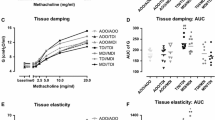Summary
Intoxications by organic isocyanates (OI) have been well known since since World War II.
The most known OI are toluene diisocyanata (TDI), diphenyl methane diisocyanata (MDI), naphthalene diisocyanate (NDI), and hexamethylene diisocyanate (HDI). All of these compounds are polymerized to polyurethane for many purposes.
Dicyclohexyl-methane-4-4′ diisocyanate (DMDI) is now used in Japan and Israel for coating glass bottle to prevent glass injuries among consumers. Eleven of 15 workers who were first exposed to DMDI showed allergic and non allergic skin reactions. Six suffered from vertigo with or without headaches and four developed a decrease of the obstructive lung function, tachycardia, and hypotension (EKG normal).
All were treated with oral antihistamines (per os) and local steroid application; the signs of the intoxication disappeared after 10–14 days from the beginning of the treatment.
There was no difference in the clinical syndrome between the workers belonging to the atopic group and the non-atopic workers. It seems that DMDI does not affect the respiratory tract as strongly as TDI. The chronic effects of DMDI and the OI are discussed. The difficulties of measuring DMDI in air are explained (TLV = 0.003 ppm).
Zusammenfassung
Vergiftungen durch organische Isocyanate (OI) sind schon seit dem Zweiten Weltkrieg bekannt.
Die bekanntesten OI sind Toluylen-Diisocyanat (TDI), Diphenyl-Methan-Diisocyanat (MDI), Naphtylen-Diisocyanat (NDI) and Hexamethylen-Diisocyanat (HDI). Alle oben erwdhnten organischen Isocyanate werden für verschiedenartige Zwecke zu Polyurethane polymerisiert.
Das Dicyclohexyl-Methane-4-4′-Diisocyanate (DMDI) wird zur Zeit für Flaschenüberzüge in Japan and Israel benötigt, um so evtl. Verletzungen durch Glasscherben zu verhindern.
Elf von 15 Arbeitnehmern, die zuerst DMDI exponiert waren, zeigten vier bis sieben Tage nach Beginn der Exposition verschiedenartige Hautaffektionen im Bereich der unbedeckten Körperteile. Sechs litten an Vertigo mit oder ohne Kopfschmerzen und vier zeigten obstruktive Ventilationsstörungen, Tachykardie und Hypotension (EKG-Normal-Befund). Alle werden oral mit Antihistaminica und lokal mit Steroiden mit gutem Erfolg behandelt. Es konnten keine Unterschiede zwischen den Arbeitern der atopischen und der nicht-atopischen Gruppe festgestellt werden. Alle Zeichen der Vergiftung verschwanden nach 10 bis 14tägiger Behandlung. DMDI scheint nicht die Atemwege so stark anzugreifen wie TDI. Mögliche chronische Schädigungen werden diskutiert. Die Schwierigkeiten, DMDI in der Luft zu messen, werden festgestellt (MAK = 0,003 ppm).
Similar content being viewed by others
Literatur
Heinrich G, Brugsh MD, Elkins HB (1963) Toluene diisocyanate (TDI) toxicity. N Engl J Med 268 [7]:353–357
Fuchs S, Valade P (1951) Etude clinique et experimentale sur quelques cas d'intoxication par le desmodur T (diisocyanate de toluylene 2–4 et 1-2-6). Arch Mat Prof 12:191–196
Dharmarajan V, Weill H (1978) Physical state of airborne p-p′-diphenyl-methane diisocyanate (MDI) and its measurement. Am Ind Hyg Assoc J 39:737–744
General Industry Safety and Health Standards (1976) US Department of Labor, Occupational Safety and Health Administration, OSHA 2206 (29 CFR 1910), Revised in Jan 1976
Konzen R, Graft B, Schell L, Gorski C (1966) Human response to low concentrations of p-p′-diphenylmethane diisocyanate (MDI). Am Ind Hyg Assoc J 27:121–127
N.I.O.S.H. (1977) Manual of Analytical Methods, 2nd ed, vol 1. Method No P&CAM 142, DG Taylor Manual Co-ordinator, US Department of HEW, NIOSH
Lowe A (1970) The chemistry of isocyanates. Proc Roy Soc Med 63 [1]:367–368
Buist JM (1970) Isocyanates in industry. Proc Roy Soc Med 63 [1]:365–367
O'Brien M, Harries MG, Burge PS, Pepys J (1979) Toluene diisocyanate-induced asthma. Clin Allergy 9:1–6
Wegmann DH, Peters JM, Pagnotto L, Fine J (1977) Chronic pulmonary function loss from exposure to toluene diisocyanate. Br J Ind Med 34:196–200
Taylor G (1970) Immune responses to toluene diisocyanate (TDI) exposure in man. Proc Roy Soc Med 63 [1]:379–380
Karol MH, Ioset HH, Alaric WC (1978) Toly-specific IgE antibodies in workers with hypersensitivity to toluene diisocyanate. Abstr Am Ind Hyg Conf, May 1978
Austen KF (1973) Systemic anaphylaxis in the human being. N Engl J Med 291:277–279
O'Brien IM, Newman AJ, Burge PS, Harries MG, Fawcett IW, Pepys J (1979) Toluene diisocyanate-induced asthma. Clin Allergy 9:7–15
Peters JM (1970) Cumulative pulmonary effects in workers exposed to tolylene diisocyanate. Proc Roy Soc Med 63 [1]:372–375
Peters JM, Wegman DH (1975) Epidemiology of toluene diisocyanate (TDI) induced respiratory disease. Environ Health Perspect 11:97–100
Wegmann DH, Peters JM, Pagnotto L, Fine L (1977) Chronic pulmonary function loss from exposure to toluene diisocyanate. Br J Ind Med 34:195–200
Lazareva L (1976) Substances used in industry, vol 2 (in Russian). Chemistry Publ, Leningrad, pp 126–127
Konzen RB, Craft BF, Scheel LD, Zorski CH (1964) Human response to los concentrations of p-p-diphenyl-methane-diisocyanate (MDI). Am Ind Hyg Assoc J 27:121–125
Author information
Authors and Affiliations
Rights and permissions
About this article
Cite this article
Israeli, R., Smirnov, V. & Sculsky, M. Vergiftungserscheinungen bei dicyclohexyl-methan-4-4′-diisocyanat-exposition. Int. Arch Occup Environ Heath 48, 179–184 (1981). https://doi.org/10.1007/BF00378439
Received:
Accepted:
Issue Date:
DOI: https://doi.org/10.1007/BF00378439




